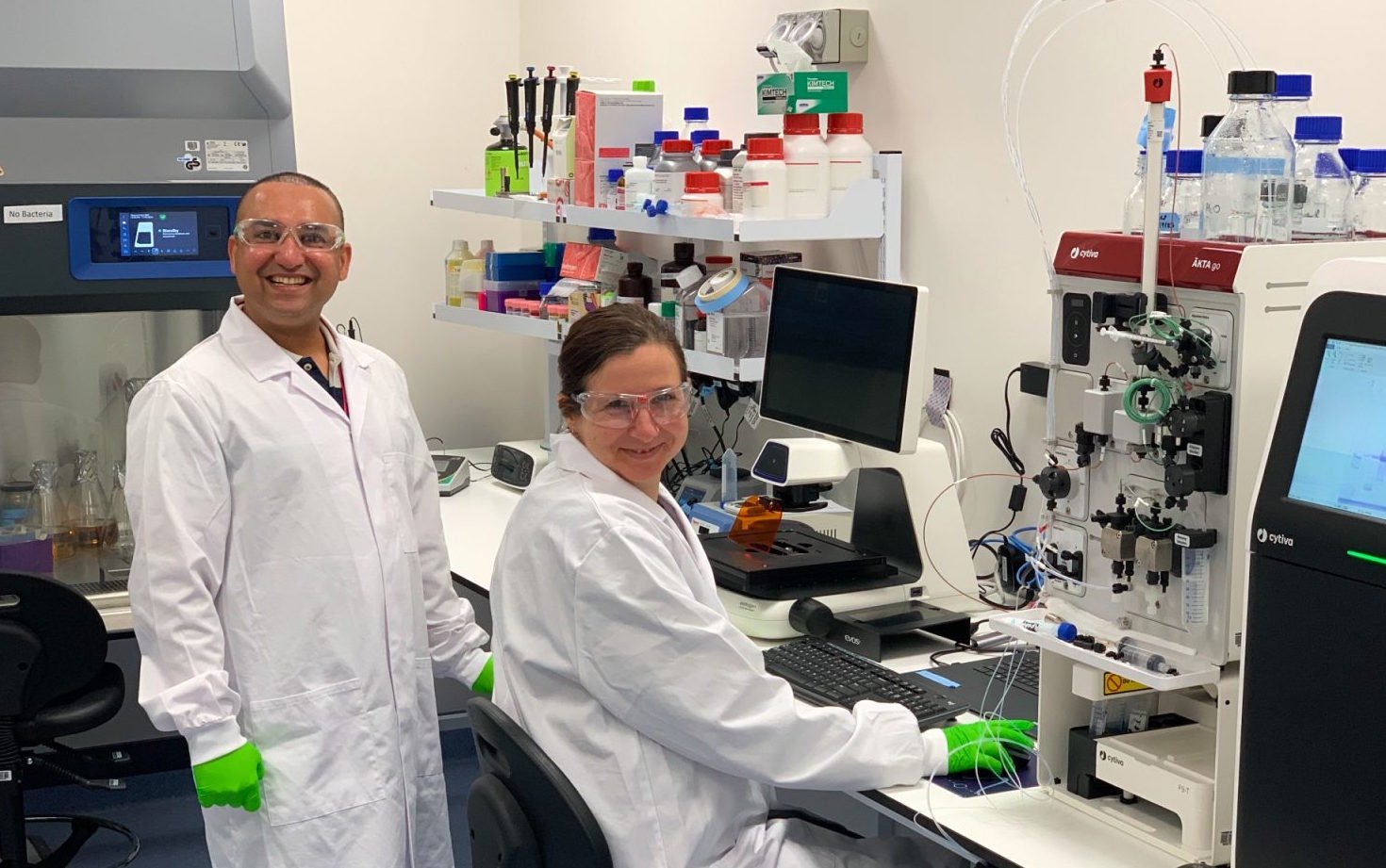TB diagnosis needs effective regulatory approach
30 July 2012 | Opinion | By BioSpectrum Bureau
TB diagnosis needs effective regulatory approach
Tuberculosis (TB) is the leading cause of death worldwide. According to the WHO, India accounts for the one-fifth of global TB problem with about 800,000 lakh of new infectious cases each year, resulting in two deaths-per-three minutes. With the advent of extrapulmonary TB (EPTB), HIV and MDR-TB the situation has worsened. In most of the developing countries, including India, sputum smear microscopy is still a backbone of TB diagnosis. It is less sensitive and can miss half of the pulmonary TB cases, which otherwise proves to be a potential reservoir for transmitting the infection from individual-to-individual. There is an overwhelming need for improving TB diagnostics in India through the use of cost-effective and patient-friendly methods owing to large genetic diversity among the target population.
Improved diagnostic tests such as rapid mycobacterial culture and nucleic acid amplification (NAA) tests are available in high-income countries but are often too expensive and complex for routine use by TB control programs in resource-constrained TB-endemic regions. The Xpert MTB/RIF (by Cepheid, US), recently endorsed by the WHO, is rapid and highly sensitive for detection of TB and drug resistance. However, this new technology is costly, preventing its use in many areas. Accurate, rapid, inexpensive, simple diagnostic tests are urgently needed for TB care and control.
In India, serological tests to detect antigens or antibodies to M. tuberculosis specific components by using cocktails of excretory or secretory protein antigens, Ag 85 complex antigens, Hsp 65 antigen, RD1 antigens have also been developed. These groups have been extensively working on over the past couple of decades and showed promise of these tests to diagnose TB through various literatures. Several biomolecules are available at our doorstep worth capable of delivering the diagnostics from concepts to the deliveries. Over the past decade, the involvement of agencies, such as stop TB Partnership's New Diagnostics working group, the WHO, TDR, Foundation for Innovative New Diagnostics (FIND), has led to the resurgence of interest in the development of new diagnostics. However, breakthrough on development of simple, rapid and cost effective diagnostic kit for mass is still evading the health administrators for effective TB control.
While serological tests work well for several infectious diseases, existing serological tests for TB (both ELISA and rapid lateral flow tests) are not accurate or consistent enough to be useful, as shown by a 2007 meta-analysis1 and confirmed by an independent evaluation of 19 commercial rapid tests by the WHO the following year2. However, evidence from these studies was not translated into policy at that time. In 2010, the WHO recognized this widespread problem and convened an expert group to formulate a policy. The expert group considered an updated meta-analysis of test and concluded that commercial serological tests remain inconsistent and inaccurate. The WHO in its first-ever negative policy recommendation called on governments to immediately ban on commercial tests to detect pulmonary TB and extra pulmonary TB.
Research and deliverables: The Indian scenario
Tuberculosis infection is a complex one. Pulmonary tuberculosis is categorized as latent, fresh, chronic, relapse and resistant and EPTB affecting other organs. Different hosts have shown variable immune response to the different antigens. Hospital-based evaluated studies by Harinath and others have shown TB ES-31 antigen in chronic PTB cases, ES-43 antigen in relapse cases, ES-41 antigen in bone and joint TB and elevated ES-20 antigen in weak immune response TB lymphadenitis patients. The antigen detection has been found to be a better marker than antibody in TB with HIV, further proving adjunct markers for increased sensitivity for TB detection.
A cocktail of antigens ES-31, ES-43 and ES-41 detecting antibody showed improved sensitivity (96 percent) in PTB cases. A cocktail of purified antibodies to ES-31, ES-43 andEST-6 (ES-41+ ES-38) showed a sensitivity of 91 percent for detection of antigen and 97 percent for immune complexed antigen with specificity of 95 percent and 99 percent respectively3,4. In prospective study, the in-house developed SEVA TB ELISA analyzed for nine months in tuberculosis suspected patients showed 100 percent correlation (42 cases) with AFB positivity but were not ATT treated. This can make an important contribution in confirming TB and correlating with clinical decision in smear negative TB cases in PTB and EPTB as studied on hospital patients.
In one of the study explored by Kashyap and others reported ELISA for the detection of Ag 85 complex (30kDa protein) in CSF samples of TB meningitis with a sensitivity and specificity 89 percent and 92 percent . Mukherjee and others have explored the sero-diagnostic potential of a panel of RD1 antigens and culture filtrate proteins for diagnosis of PTB and EPTB. Among the antigens Rv 3872, Rv 3878, ESAT-6, CFP-10 and CFP-11, CFP-31, Ag85A and Ag 85B tested, Rv 3872 and its antigenic epitopes have emerged as promising antigens4.
Time to change thinking
However such tests are excluded from these systematic reviews in spite of decades of research performed to identify these target markers and assess their immunogenic and diagnostic potential. Although, the Government measures to ban certain serological tests is the well-come initiative due to lack of consistency in sensitivity and specificity but imposition of harsh policies through banning the serological immunodiagnostic kits are hampering promising molecules, which would otherwise aid in clinical decision making for diagnosis and proper management of TB patients.
Our approach to immunodiagnostics cannot be mathematical in terms of percentage sensitivity and specificity but needs to be pragmatic to make it useful to the clinicians in diagnosis, monitoring and management of patients for continued patronage. Another reason for failure of serology is the expectation that it should be similar to sputum smear or culture, the gold standard, in spite of associated limitations. We must understand that serological tests cannot replace the culture and sputum smear microscopy but can certainly be proved the valuable adjunct in clinical decision making wherein we face the clinician with his or her clinical judgment, adding to the complexity of diagnosis.
Need regulatory support and task force
Despite increasing emphasis on strengthening infrastructure for healthcare, the Indian government has overlooked the need to chalk out a well defined regulatory pathway for diagnostic products, leaving many domestic industries lurching in the dark. The Indian diagnostics market witnessed a growth of 22 percent from 2,000 crore to 2,440 crore in 2010-11. Despite the prime significance of this sector, a well-defined regulatory pathway for diagnostic products is awaited. We understand that the independent validation of a diagnostic kit is an important process as an in-house team can sometimes be biased. However, there is no clear pathway described by the government on what-and-how exactly should the validation process be carried out.
Companies and research organizations have to scout around for institutes or hospitals to test and validate their tools. Without strong support of the WHO, FIND, other organizations and regulatory task force, the vision 2020 to eliminate TB looks gloomy. Instead of imposing harsh decisions like banning the tests, international organizations must empower the national implementation program to undertake such diagnostic kits for proper validation studies. We desperately need the tests that use a cocktail of antigens to cover the entire spectrum of tuberculosis for diagnosis irrespective of the HIV status, owing large genetic diversity among Indian population.
Possible measures for bringing TB tests into market
Regulation of in vitro diagnostics (IVDs) is weak in India. The central Drug Standard Control Organization (CDSCO) classified IVDs as "critical" or "non-critical" with only a few test like HIV, Hepatitis B &C being considered "critical". TB tests are not classified as "critical tests" by the DCGI, and this allows the entry of sale of suboptimal sero-diagnostics without proper validation. Quality council of India, which is an autonomous body of Department of Industrial Policy and Promotion, Government of India, must address this by establishing and improving national accreditation structures, including National Accreditation Board for Testing and Calibration Laboratories (NABL), and National Accreditation Board for hospital and Healthcare Providers (NABH).
Creation of an "Indian Standards for TB Care" along the lines of the "International Standard for TB Care" for both public and private sectors might help in overcoming the reluctance about accepting the current ELISA-based leads for diagnosing TB, following complete validation of test kit. Owing to the large genetic diversity in the country, importing and usage of foreign kits by the doctors would again prove dangerous leading to mismanagement of TB. A significant contribution by India in the field of in-house PCR assays and cost effective immunodiagnostic serological kits with better sensitivity and specificity; judicial use of cocktail antigens to detect antibody along side of antigen; and immune complex antigen detection would help in developing a successful immunodiagnostic profile for tuberculosis.
Using these leads, an attempt to develop rapid point-of-care technology to detect TB would be a nice initiative in the direction of giving better serological tests with approved validation. In practice, it requires the political will at the level of DCGI, high level support from agencies such as RNTCP and the ICMR. Without such measures the "vision 2020" of "Global TB Elimination" will eliminate itself and TB microbes will keep evading the human habitat, adding to the suffering of humans.
References:
1. Steingart KR, Henry M, Laal S, and others . Commercial serological antibody detection tests for the diagnosis of pulmonary tuberculosis: a systematic review. PloS Med 2007; 4;e202.
2. World Health Organization. Diagnostics Evaluation Series No.2. Laboratory-based evaluation of 19 commercially available rapid diagnsotic tests for tuberculosis. Geneva: World Health, Organization; 2008.
3. Harinath B.C. Immunodiagnostics for tuberculosis-Problems and Progress. Indian J Tuberculosis 2010; 57:I23-I27.
4. Haldar S, BoseM, Chakrabarti P, and others . Improved laboratory diagnosis of tuberculosis- The Indian experience. Tuberculosis. 2011;91:414-426.












